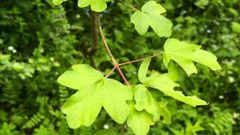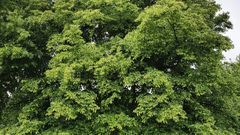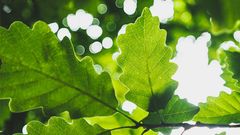

The Norway Maple(Acer platanoides) is a deciduous tree native to Europe and Asia that has been introduced to North America where it tends to become invasive. It is sometimes confused with the sugar maple which leaf adorns the Canadian flag, but they are not the same species.
Planting Norway Maple trees in our forests brings numerous benefits. Having diverse tree species in a forest enhances its ecological richness, provided we respect soil conditions, site requirements, and native species. Norway Maples are excellent at absorbing carbon dioxide (CO2) and producing oxygen (O2), which improves air quality and helps combat climate change.
With their broad leaves, these trees are particularly effective at absorbing CO2 compared to other species. They also provide crucial habitats for wildlife such as birds, squirrels, and bats, supporting local biodiversity. Norway Maples are admired for their year-round beauty: lush green leaves in summer, vibrant red and orange foliage in autumn, and a stately presence in winter.
Not only do Norway Maple trees offer ecological benefits, but their wood is also highly valued for lumber and industrial uses. This is especially true in furniture making and paper pulp production, making them a valuable resource for the economy.
The Norway Maple is a relatively hardy tree species, a light species that tolerates some shade when young. It is adapted to a temperate climate with warm summers and cold winters. It appreciates base and nitrogen rich, cool and well aerated soils. When young, it needs regular watering but can tolerate dry periods as an adult.
Norway Maple wood is a valuable and versatile material, known for its hardness and strength, which makes it suitable for a wide variety of uses. It is used for flooring, furniture, musical instruments (guitars, pianos, drums, etc.), kitchen utensils and paper pulp. Its light yellow wood is highly sought after when flamed. It is therefore often used for high-end furniture, veneers, flooring and mouldings. Its wood is also durable and impact resistant, making it a material of choice for items that are used daily, such as kitchen utensils and tools.
The Norway Maple is a tree rich in symbolism across world cultures. It is revered as a symbol of strength and resilience for its ability to thrive in challenging conditions and regenerate after events like forest fires. In Asian culture, the Norway Maple is often seen as a symbol of prosperity and good fortune due to its auspicious hand-shaped leaves. Moreover, it is admired for its beauty, with unique wood colour and texture, and stunning autumn foliage. Among the Celts, the Norway Maple held mystical significance and was closely associated with the Druids.
Our goal is to enable anyone to do something that benefits nature and helps us to live in a more harmonious world. So why not become a tree owner in a European forest and help combat climate change?






Please note that this is promotional communication. See our notice of information.